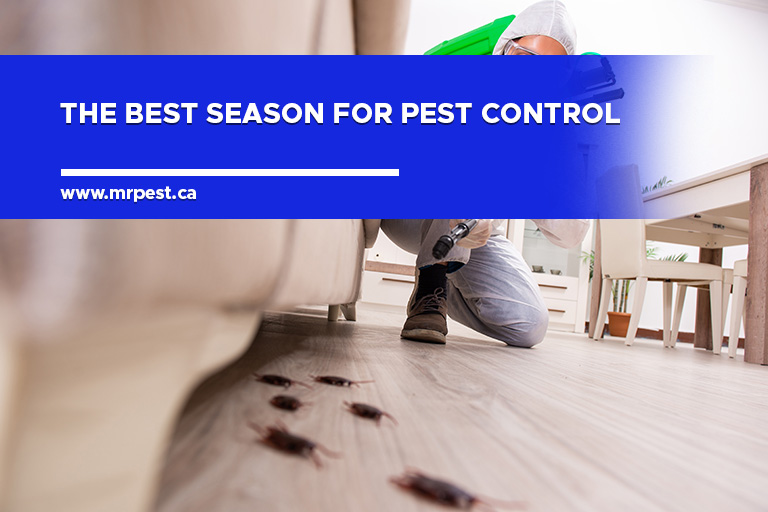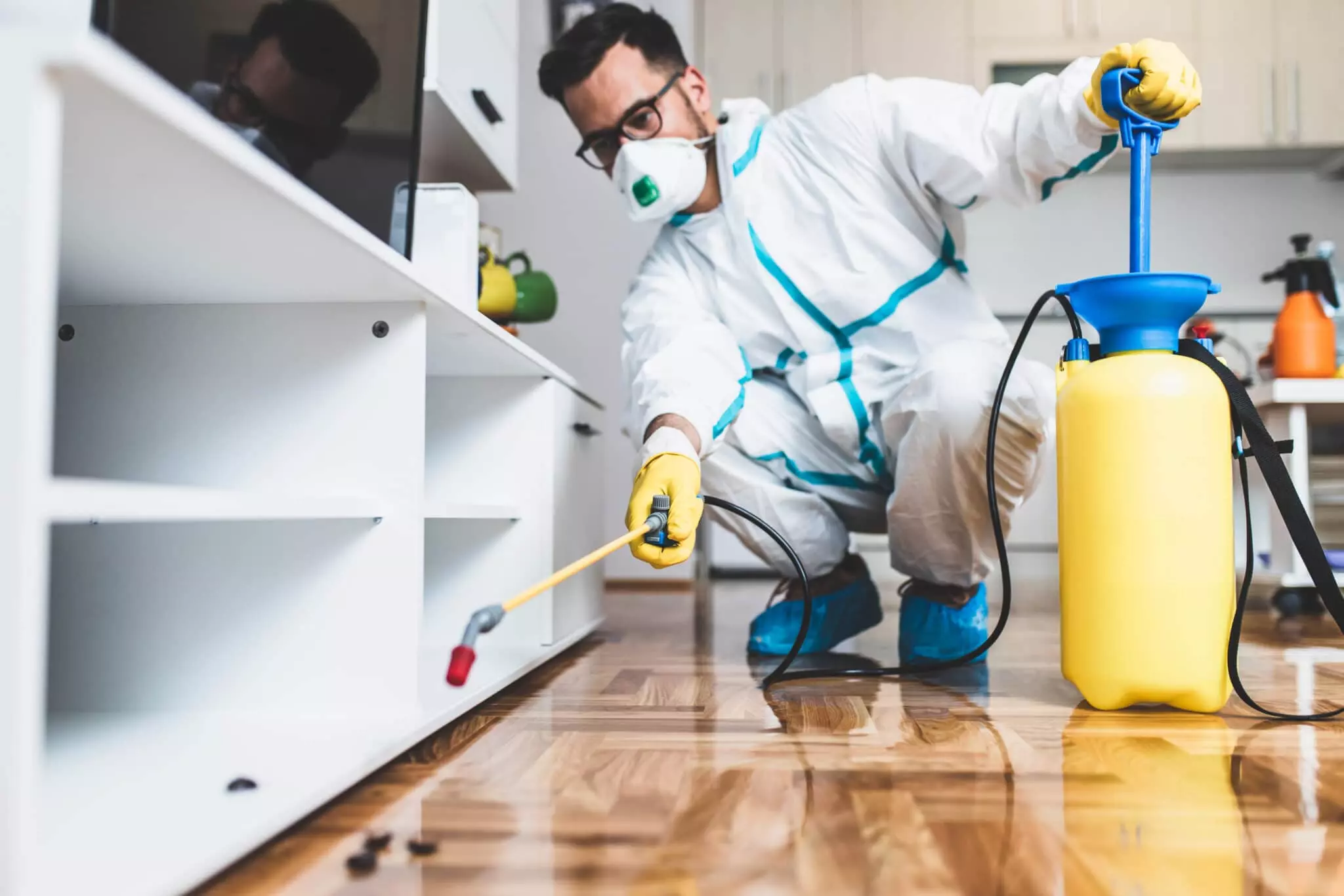Top Coquitlam Pest Control Solutions for a Rodent-Free Home
Top Coquitlam Pest Control Solutions for a Rodent-Free Home
Blog Article
Safe and Trusted Bug Control for Lasting Protection
Efficient bug administration needs a diverse technique that balances ecological integrity with the need for effective pest suppression. The subtleties of these techniques may not be instantly clear, prompting a more detailed exam of the methods that can lead to sustainable pest control end results.
Recognizing Bug Control Methods
Pest control incorporates a range of methods targeted at handling and eliminating unwanted bugs and rodents that can intimidate both health and wellness and property. Recognizing these methods is crucial for reliable insect management.
The key classifications of pest control techniques include mechanical, organic, and chemical strategies. Mechanical techniques involve physical barriers and catches to avoid insect entry and capture undesirable species. For example, utilizing screens on windows or utilizing sticky catches can considerably reduce bug populations without presenting damaging materials.

Chemical bug control is usually one of the most identified approach, making use of chemicals to remove pests. These chemicals can be effective but should be utilized with caution to prevent negative impacts on non-target types and the atmosphere.
Advantages of Eco-Friendly Solutions
How can eco-friendly remedies transform pest control methods? The adoption of environment-friendly insect control approaches provides numerous benefits, considerably boosting the efficiency and safety and security of bug management.

Another advantage is the positive impact on regional biodiversity. Green services are designed to target specific insects while maintaining valuable bugs and wild animals, advertising a well balanced ecosystem. This method lines up with the expanding customer need for lasting techniques, boosting the reputation of insect control carriers.
Integrated Pest Management Strategies
The implementation of environmentally friendly services naturally causes the adoption of Integrated Insect Administration (IPM) techniques, which even more improve insect control efficacy. IPM is a holistic approach that combines multiple methods to manage pest populaces while decreasing environmental influence. This strategy stresses making use of organic, social, mechanical, and chemical controls, making certain a sustainable and well balanced technique of insect management.
One fundamental facet of IPM is the detailed analysis of bug activity and ecological problems. By keeping track of insect populaces and recognizing their life cycles, practitioners can apply targeted treatments that disrupt the parasite's environment or lifecycle, reducing dependence on chemical pesticides. Furthermore, social methods such as crop turning and habitat adjustment can substantially decrease parasite establishment and recreation.
One more crucial part is the use of organic control agents, such as valuable bugs or microbes, which can naturally subdue insect populaces. When chemical applications are required, IPM focuses on the use of low-risk chemicals and applies them uniquely, decreasing exposure to non-target microorganisms and people.
Including IPM techniques not just improves bug control effectiveness however additionally promotes a more secure ecosystem, lining up with the expanding demand for sustainable techniques in insect monitoring.
Safe Practices for Property Owners
Recognizing the importance of safe methods in parasite control can empower property owners to properly manage insect problems while guarding their health and the environment. Carrying out precautionary procedures and safe approaches is essential in reducing direct exposure to dangerous chemicals.
Homeowners should first assess their setting for problems that draw in pests, such as standing clutter, water, and food waste. Frequently cleaning and securing access factors can prevent insects from invading the home. Utilizing all-natural deterrents, such as necessary oils or diatomaceous planet, can offer effective choices to chemical pesticides.
When chemical therapies are required, homeowners need to choose products that are specifically classified as risk-free for residential usage. It is vital to follow application standards carefully to avoid too much exposure. In addition, utilizing targeted therapies in areas where pests are determined, instead of covering spraying, can dramatically decrease chemical usage.
Finally, maintaining open communication with parasite control professionals is essential. Home owners need to ask concerning the safety of items made use of and request green choices whenever feasible. By taking on these safe methods, home owners can create a much healthier living setting while effectively handling parasite issues.

Tips for Long-Term Protection
Establishing a bug monitoring technique see post that highlights lasting defense can greatly enhance the efficiency of the risk-free techniques formerly talked about. To accomplish this, house owners need to implement routine assessments of their property, focusing on hidden areas such as attics, cellars, and crawl rooms. Early discovery of parasite activity is essential in stopping invasions from holding.
These practices lower attractants that attract insects into the home. Securing entrance points, such as splits around doors and windows, can properly block potential parasite gain access to.
Landscaping needs to likewise be considered; maintaining plants trimmed and maintaining a range between vegetation and the home lessens hiding places for bugs. Using all-natural deterrents, such as necessary oils or diatomaceous earth, can better prevent infestations without considering severe chemicals.
Last but not least, working together with a professional parasite control service for periodic analyses can offer an added layer of safety and security. These specialists can provide customized recommendations and advanced therapies, ensuring that your home stays shielded against bugs in the long-term.
Conclusion
Finally, safe and trustworthy parasite control requires a diverse technique that emphasizes green methods and integrated bug monitoring. By implementing natural deterrents, carrying out routine examinations, and maintaining proper sanitation, homeowner can substantially lower parasite populaces while protecting advantageous bugs and the atmosphere. Cooperation with specialist parasite control solutions boosts the effectiveness of these techniques, making sure customized options that supply long-term defense and tranquility of mind versus future problems.
Reliable bug monitoring calls for a multifaceted strategy that balances ecological integrity with the demand for reliable parasite suppression. The adoption of environment-friendly parasite control approaches uses numerous advantages, considerably boosting the effectiveness and safety and security of pest management.The implementation of environmentally friendly services naturally leads to the fostering of Integrated Parasite Management (IPM) techniques, which additionally improve insect control effectiveness. exterminator coquitlam. By checking pest populations and identifying their life cycles, professionals can execute targeted treatments that disrupt the parasite's environment or important site lifecycle, decreasing reliance on chemical pesticides.In final thought, risk-free and reputable insect control needs a my site multifaceted method that stresses environment-friendly techniques and incorporated parasite monitoring
Report this page